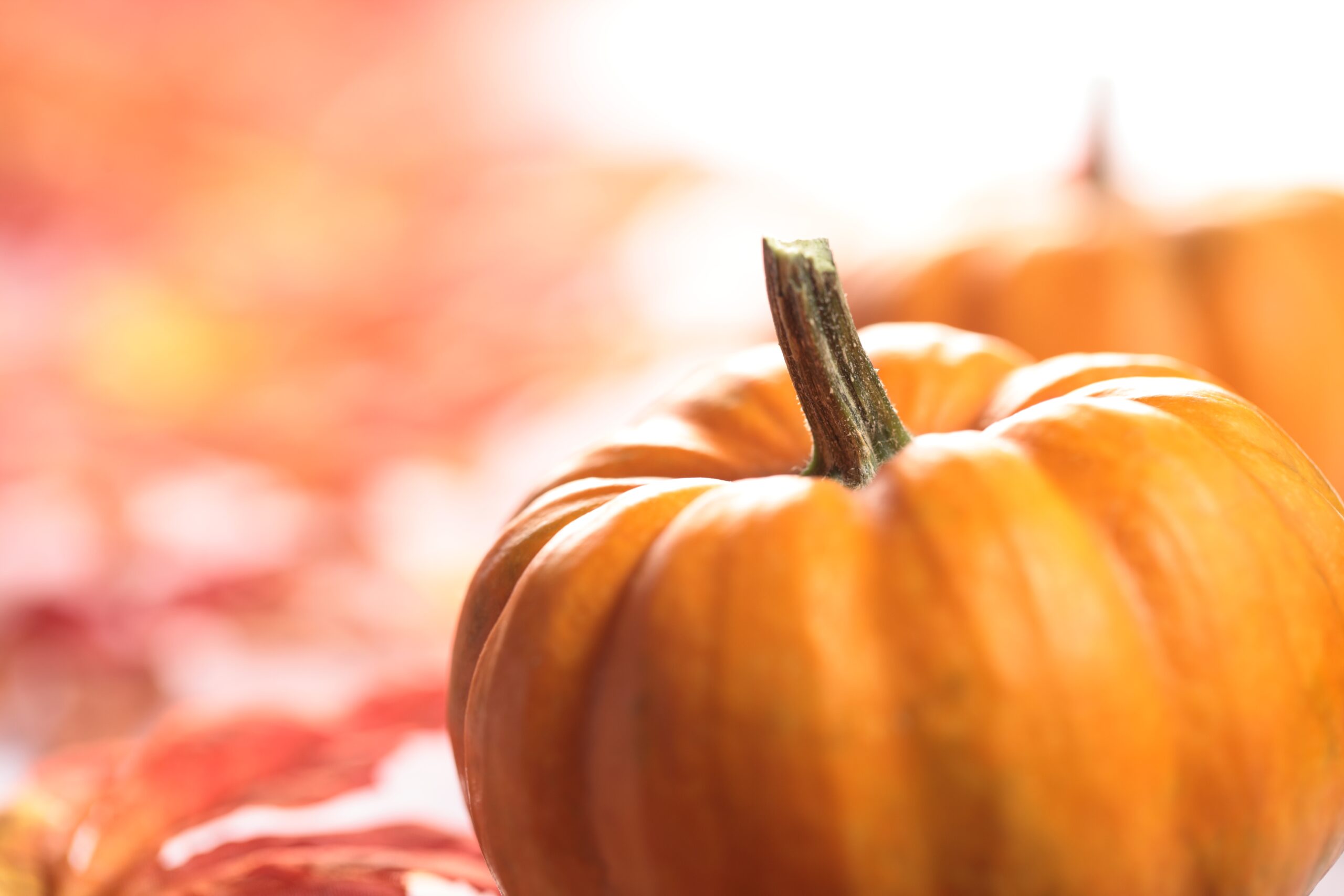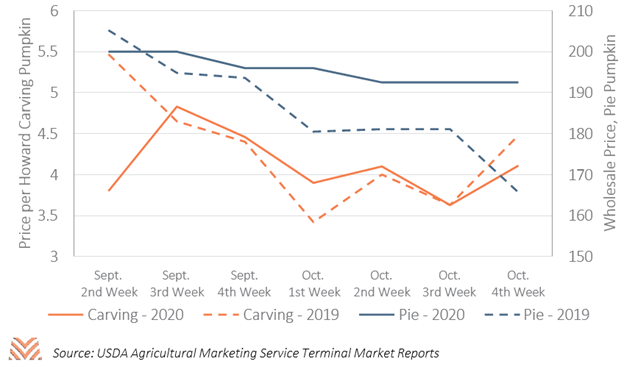Holiday Consumption in 2020

For many Americans, the holidays of 2020 looked different than years prior. Halloween featured fewer trick-or-treaters; fewer extra chairs were needed for Thanksgiving; and some holiday cookie recipes were halved. However, the impacts of all these changes were less obvious. Halloween chocolate sales were up 25% in the lead up to All Hallows’ Eve even though there were fewer predicted gremlins and ghosts. Consumers seemed primed to spend on holiday foods even if many of them needed less than in a typical year. The allure of eating a bag of fun-size candy alone did not perfectly translate to pumpkin pie and Christmas ham. What did we learn from how consumers behaved through a unique holiday season?
Initials surveys show that most Americans altered their holiday plans in at least some ways as a result of the pandemic. The Pew Research Center found that 57% of Americans changed their Thanksgiving plans in a meaningful way. This may have led to some softness in Thanksgiving foods. The American Farm Bureau Federation found that the total cost of a typical 4-person Thanksgiving meal fell 2% from 2019, driven by a steep decline in turkey prices. Total weights of slaughtered turkeys also fell year over year, being 3% below 2019 levels during November.
However, this doesn’t mean that there were fewer gatherings. On the contrary, Google trend data gives us some evidence that Thanksgiving meals were smaller but more common in 2020. Americans were more likely to search for how to cook a turkey in 2020 than in any prior year, as interest in smaller birds surged while large tom searches were flat or fell. The USDA’s Agricultural Marketing Service also found that Thanksgiving turkey demand for 8 to 16-pound hens was good, while demand for 20 pound and heavier birds was “light at best.” Overall, consumers apparently looked to scale what commodities they could as they planned for smaller gatherings.

What about less scalable items, like pumpkin pie? With more dinners, more cooks may have tried their hands at baking their own pie through the fall months. Once again, Google trend data shows that search interest in pumpkin pie baking was higher in 2020 than any prior year. This was also borne out in retail pricing. Average wholesale pie pumpkin prices held steady through September and October, unlike in 2019 when prices fell as the season progressed. However, advertised carving pumpkin prices showed similar year over year prices. This could signal that consumption was relatively higher for products needed for less scalable baked goods, like pumpkin pie.

This same relationship with scalability held in December. Sales of Christmas trees in the first few weeks of December were up to 50% higher than prior year levels, according to the Michigan Christmas Tree Association. Unique holiday foods like fruitcake saw more Google trend interest in 2020 over prior years. And recipe searches for green bean casserole to cranberry sauce all saw higher year over year interest.
Yet, once again, more scalable holiday foods did not see unexpected surges in demand. Pork retail prices were largely unaffected through December, and slaughter trends saw similar changes to turkeys. Cheese prices were solid but not unexpectedly strong, signaling that consumers may have skipped the third option for their holiday cheese board for a smaller bunch of attendees. However, stronger butter sales hint that Americans were cooking through the holiday season.
Taken together, these stories imply that Americans found ways to celebrate the 2020 holidays despite the strange circumstances. A follow-up survey from the National Confectioners Association found that more than half of Americans said they would buy at least as much candy as previous Decembers despite the circumstances. A quarter intended to increase their total purchases, despite smaller gatherings. In an otherwise atypical year, many Americans seemed to lean into the traditions of the holiday season.
What this means for future holidays in a post-pandemic world is difficult to tell. Through 2020, Americans did make changes to their holiday plans, and those plans often resulted in smaller and more numerous gatherings. That may have hurt consumption for scalable commodities like turkey, while less scalable items like pumpkin pie saw some benefit. If some families decide that they preferred the more intimate settings of 2020, these lessons may be relevant to producers long after the pandemic has passed.










